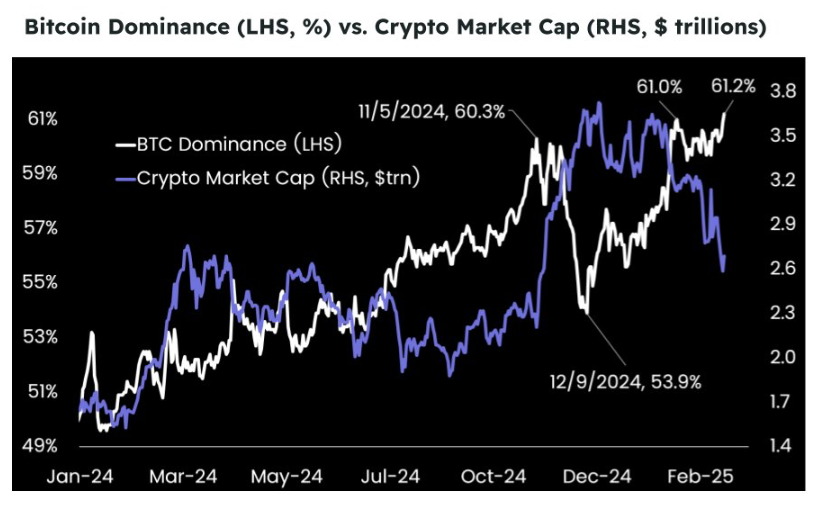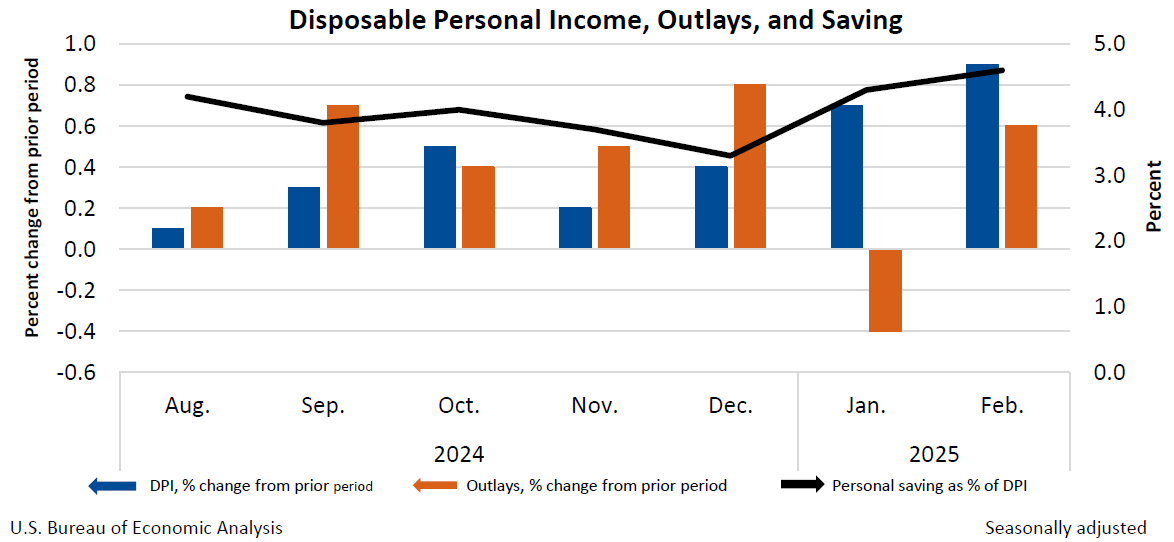When will Bitcoin decline end? Let's look at regulatory icebreaking and macro improvement

Reprinted from panewslab
04/01/2025·28DAuthor: Bitfinex Alpha
Compiled: Tim, PANews
Bitcoin's performance in the first quarter of 2025 hit its worst record in nearly a decade, and despite the price soaring to an all-time high of $109,590 at the beginning of the year, it still recorded a drop of nearly 11% at the close of the quarter. The market's initial optimistic expectations for Trump's possible victory and the implementation of a pro-cryptocurrency policy have rapidly evolved into a textbook-like "selling facts" market as substantial regulatory reforms have not been implemented for a long time. Since its all-time high, Bitcoin has fallen to $77,041, with a maximum retracement of nearly 29%, and has since fluctuated mainly in the trading range of $78,000 to $88,000.

However, the market structure is still favorable to Bitcoin. Despite a sharp decline in total cryptocurrency market capitalization, Bitcoin’s dominance has climbed to more than 61%, indicating that funds are rotating from riskier altcoins to Bitcoin in an environment of increased macro uncertainty. Altcoins such as Ethereum and Solana have fallen by 35%-50% from their cyclical highs, which further strengthens Bitcoin's position as a "reserve asset" in the crypto market.
With the opening of the second quarter, market price trends are still highly dependent on the guidance of macroeconomic signals, and the Federal Reserve's policy trends and ETF capital flows will continue to dominate the market direction. Although the current signs of panic sell-offs among investors have eased, in the environment of continuous liquidity tightening, if the market wants to form a trend breakthrough, it still needs to wait for a catalyst event with sufficient influence to appear.
Judging from the macroeconomic situation, resilience is being shown in certain areas of the U.S. economy, such as narrowing trade deficits and increasing spending on durable goods, but these highlights are overshadowed by deeper structural concerns. Driven by factors such as the new tariff policy pushing up import costs, inflation accelerated beyond expectations. Core inflation rose 0.4% month-on-month in February, the biggest monthly gain in more than a year, while consumer expectations showed inflation could continue to be high for a longer period of time.

Personal disposable income, expenditure and savings
Meanwhile, economic growth is slowing down. Real income growth remains weak after deducting government spending, while services, which is a key economic driver, has begun to shrink. Consumer confidence continues to decline, the American Economic Chamber of Commerce consumer confidence index fell to a two-year low, and more Americans expect unemployment to rise. These trends indicate that families are becoming more cautious, specifically manifested as a continuous rise in personal savings rates.
Trade policy remains the core pressure point at present. Recent tariff hikes and market expectations that further measures may be introduced in April and May are prompting companies and consumers to adjust their behavior patterns, including early procurement, delaying investment or reducing recruitment scale. Although the trade deficit narrowed in February, the figure follows a surge in imports in January, which may have been included in GDP forecasts. Affected by this, economic growth is expected to slow significantly in the first quarter.
Despite the ongoing economic uncertainty, the crypto industry still benefits from a friendly political environment, the Trump administration is promoting an increasingly clear regulatory framework, and the enthusiasm for institutional participation is growing.
The SEC formally dismissed lawsuits against three major industry players Kraken, Consensys and Cumberland DRW. The move marks the agency's shift from a previously tough regulatory stance to a more collaborative regulatory approach. It also indicates that regulators will be committed to formulating a clear and more constructive rule system for the cryptocurrency industry.
To further promote crypto-regulation, the U.S. Securities and Exchange Commission’s Crypto Assets Working Group announced that it will hold four special roundtables from April to June 2025. These meetings will invite all parties in the industry to participate in the discussion around core issues such as crypto transaction supervision, digital asset custody, tokenization and the future development of decentralized finance. The event will be open to the public, a move reflects the SEC's regulatory orientation to promote open dialogue and enhance transparency in the process of formulating cryptocurrency policies.
Meanwhile, Trump Media and Technology Group announced a partnership with cryptocurrency trading platform Crypto.com, planning to launch a series of exchange-traded fund ETFs focused on cryptocurrencies. This move marks the group's official entry into the financial products sector, aiming to meet the market's growing demand for digital asset investment vehicles. Although the plan still needs to be approved by regulators, if it is successfully implemented, it will greatly increase the popularity of Trump's Media & Technology Group and Crypto.com in the traditional financial field.


 chaincatcher
chaincatcher